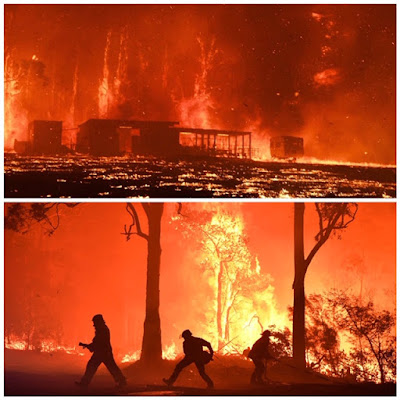Due to unprecedented requests, I am continuing with my story on local "nasties", this time at the beach.
We must have our fair share of sharks in the ocean around here. But I have to say I have never seen one. In fact over 40 years of surfing the east coast of Australia I have only seen three up close and personal. That is three too many but they say it’s the one you don’t see that gets you.
From reports of local fishermen and abalone as well as recreational divers we know we have the white pointer, the bronze whaler, the hammerhead, bullshark, and tiger shark as well as the grey nurse in our waters.

Generally sharks stay well off shore but they do come in with the warmer currents and when bait fish are on the run. Common sense tells us not to swim early in the morning or late in the evening. Swimming near or in river mouths and estuaries is also a 'no no' but you see hundreds of people doing this during the holiday season.
In Sydney I have seen sharks 50km up the St.Georges River at the Liverpool weir in what is basically fresh water. So you know it's really never safe to go back in the water!
We do not have saltwater crocodiles, thank goodness. These live in tropical waters up north and are the ones Steve Irwin used to "play" with.
We do have stingrays. Steve played with one too many of these. They can live close to shore and we see them often especially around rocky headlands. Some can be nearly 2m across. They do not attack but it is just as well to keep clear of them as they keep a nasty barb on their tail and this can do some damage. Sometimes smaller ones bury themselves in the sand on the water’s edge and can easily be stepped on.

I have had manta rays swim under me while on my board. These are huge, up to 4m across but are not considered dangerous.
Another nasty to keep clear of is the bluebottle or Portuguese man of war. These get blown into shore usually with strong nor’ easters and can be in plague proportions. Stings from them are
very painful.

Less painful are stings from the jelly blubber, a blue jelly fish, which can suddenly appear in thick swarms if the tides and wind is right.
Luckily we are too far south for the box jelly fish or sea wasp which is a killer.
But we have a killer in the rock pools on the many headlands of the area. This is the blue ringed octopus. This creature is only around 12cm long and weighs less than 90g

When threatened flourescent blue spots appear on its body. The beak can inject enough venom to paralyse 10 adult males and an untreated bite can be fatal. So it's one to keep an eye out for and be especially concerned about when children are exploring rock pools at low tide.
There are supposed to be 20 species of sea snakes in Australian waters. I think we maybe too far south to be concerned with them which is good because I think we have enough to deal with.

































